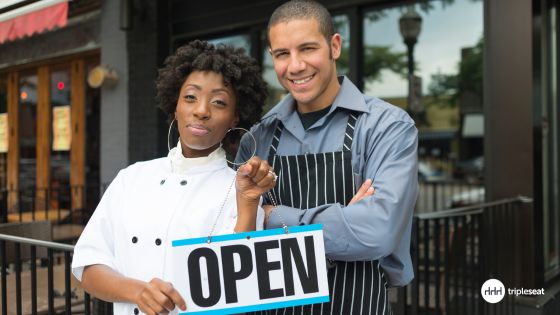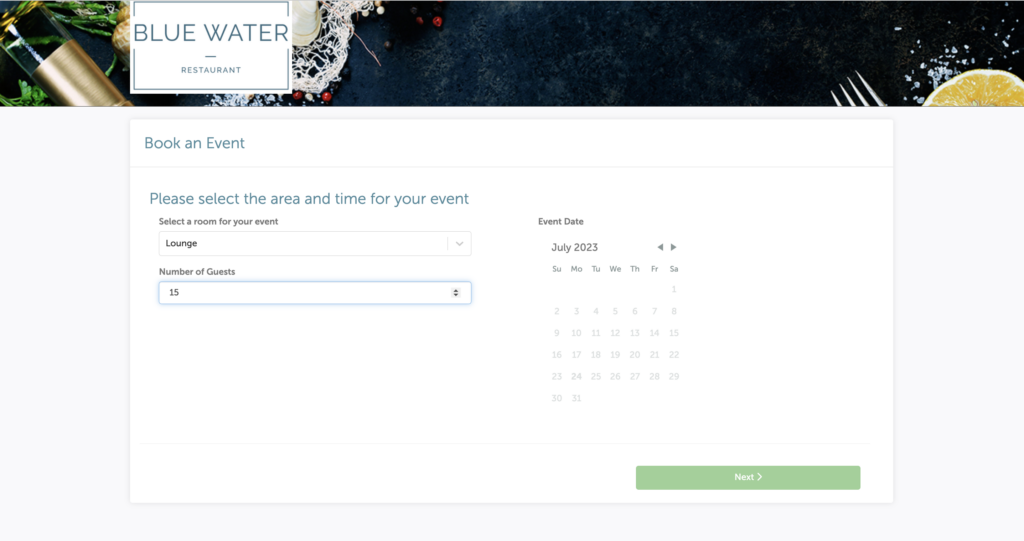Scaling Local Success: Crafting a Multi-location Restaurant Marketing Strategy

You’ve built a thriving restaurant and are now expanding into a full-fledged restaurant group. But with each new location, the complexity of multi-location marketing increases. While Tripleseat ensures operational consistency across your private events—centralized bookings, standardized documentation, and seamless communication—true marketing success for a growing restaurant brand requires more than just uniformity.
Today’s restaurant groups must strike a refined balance: harnessing the scale and efficiency of centralized marketing while empowering each location with the agility to connect authentically with local audiences. As mass media gives way to personalized, data-driven engagement, your marketing must evolve too.
Brand consistency isn’t just about matching logos or fonts across locations. It’s about cultivating a sense of local relevance and ownership, making every customer feel like they’re engaging with a neighborhood favorite, not just a national chain.
Here’s how to move beyond surface-level consistency and craft a multi-location marketing strategy that is both strategically cohesive and deeply resonant at the local level:
1. Create a Brand Playbook for Marketing Success Across All Your Restaurant Locations
Ensuring restaurant brand consistency is paramount. Your core brand identity (mission, values, unique selling proposition) is non-negotiable. But instead of just a static brand guide, create a dynamic ‘Brand Playbook’ for each location’s management and marketing team.
- Storytelling Frameworks: Provide templates for how each location can tell their unique story while aligning with the overall brand narrative. This could be about the chef’s local sourcing, a quirky historical fact about the building, or a staff member’s connection to the neighborhood. This empowers local teams to create authentic content.
- “Local Flavor” Content Ideas: Offer a bank of suggested localized content pillars. Think seasonal menus using local produce, partnerships with nearby small businesses (e.g., a local brewery collaboration, a bakery supplying your desserts), or spotlights on community events where your team participates.
- Response Playbooks for Local Reviews: Beyond just “respond promptly,” provide guidance on how to address positive and negative reviews with a local, empathetic tone, even when the core brand message is consistent. This demonstrates genuine care for each customer’s experience.
2. Assign a “Community Connector” Role: A Dedicated Local Advocate
For true hyper-local impact, consider dedicating resources to community integration at each location or training existing managers to wear this hat effectively. This active restaurant community engagement builds genuine goodwill and ensures your locations are seen as integral parts of their neighborhoods.
- Designated Local Liaisons: Empower a specific manager or team member at each location to be the “Community Connector.” Their role isn’t just operations; it’s actively seeking out local partnerships, engaging with neighborhood associations, and identifying hyper-local events.
- Micro-Influencer Strategy: Instead of just national influencers, focus on finding local food bloggers, community leaders, and even prominent regular customers who genuinely love your specific location. Their authentic recommendations carry immense weight within their immediate circles.
- Hyper-Local Event Calendar & Promotions: Leverage Tripleseat’s centralized event management, but encourage each location to populate their specific TripleseatDirect forms with hyper-local packages and promotions. Think “Neighborhood Appreciation Night,” “Local Business Lunch Special,” or a “Farmers Market Brunch” tied to a specific local market. This shows you understand their direct community’s needs.

3. Dive Into Data for Multi-Unit Restaurant Marketing
Tripleseat’s robust reporting gives you a bird’s-eye view across all locations. Now, dig deeper to inform precise localized marketing.
- Audience Segmentation by Location: Analyze your CRM data (which Tripleseat can help populate) to understand the demographic and psychographic profiles of your customers at each specific location. Are some locations more family-centric? Do others attract a corporate lunch crowd? This informs targeted advertising.
- Event Type Performance by Market: Use Tripleseat’s event reports to identify which types of private events (corporate, social, holiday parties) perform best in which locations. This allows you to tailor your local outreach and advertising for private dining and catering. If Location A excels at corporate events, focus your B2B marketing there. If Location B is a wedding hotspot, double down on bridal show participation.
- Menu Item Popularity by Geography: While core menus are often consistent, analyze sales data (integrated with your POS) to see if certain dishes or specials are wildly popular in one location but not another. This can inform hyper-local menu tweaks or special promotions that truly resonate.
- Lead Source Analysis by Location: Tripleseat helps track lead sources. Use this to understand where your leads are actually coming from for each specific venue. If a local community Facebook group is a massive lead generator for one spot, invest more in that channel for that location.

4. Seamless and Targeted Digital Marketing Integration Across Restaurant Group
While your overall digital footprint is centralized, the execution needs to feel localized.
- Google My Business as a Local Hub: Beyond just accurate info, actively use GMB for each location. Post local updates, respond to every review (positive or negative) with a personal touch from the local manager, and upload fresh, location-specific photos. This dedicated focus on local SEO for multi-location restaurants ensures that when someone searches for ‘restaurants near me’ in a specific area, your location is front and center
- Hyper-Segmented Email Campaigns: Don’t just send one email to everyone. Segment your email list by location, allowing you to send targeted promotions, local event announcements (pulled from Tripleseat’s event calendar), and even personalized messages from the local general manager.
- Paid Social Media Geo-Targeting: While your main brand runs broader campaigns, allocate budget for geo-targeted ads for each location, promoting unique events, specials, or even job openings relevant only to that specific neighborhood. This avoids wasted ad spend and increases relevance.
5. Enable Local Teams with Guided Strategic Autonomy
The balance between centralized control and local empowerment is delicate.
- Training Beyond Operations: Train local managers not just on how to use marketing tools, but on the why behind the strategy. Help them understand their local market, interpret data, and propose creative local initiatives.
- Budget for Local Activation: Allocate a small, flexible marketing budget to each location that managers can use for hyper-local initiatives (e.g., sponsoring a local school event, running a small Facebook ad campaign for a specific local offer).
- Share Best Practices Locally: Create internal channels for location managers to share their successful local marketing initiatives. What worked for one location might inspire another.
In essence, a cohesive marketing strategy for multi-location restaurants isn’t about imposing uniformity; it’s about building a robust framework that allows for strategic, data-informed localization. By combining the power of your core brand with the agility of hyper-local engagement, you can ensure each restaurant thrives as a beloved community hub while strengthening your overall brand empire. With tools like Tripleseat handling the event operations, your teams are freed up to focus on these high-impact, strategic marketing initiatives.
Ready to Elevate Your Multi-Location Restaurant’s Marketing?
As you strategize your marketing for multiple restaurant locations, remember that efficient event management is a cornerstone of success. A cohesive marketing strategy thrives when operations are streamlined.
Discover how Tripleseat can help you centralize your private events, boost bookings, and free up your teams to focus on those vital hyper-local marketing initiatives.
